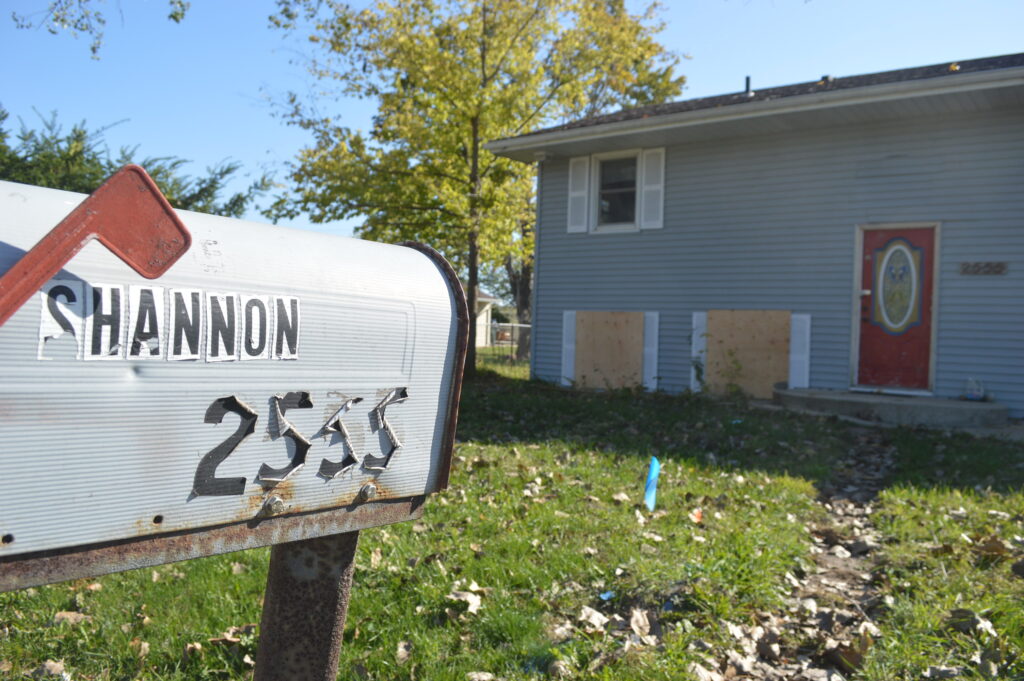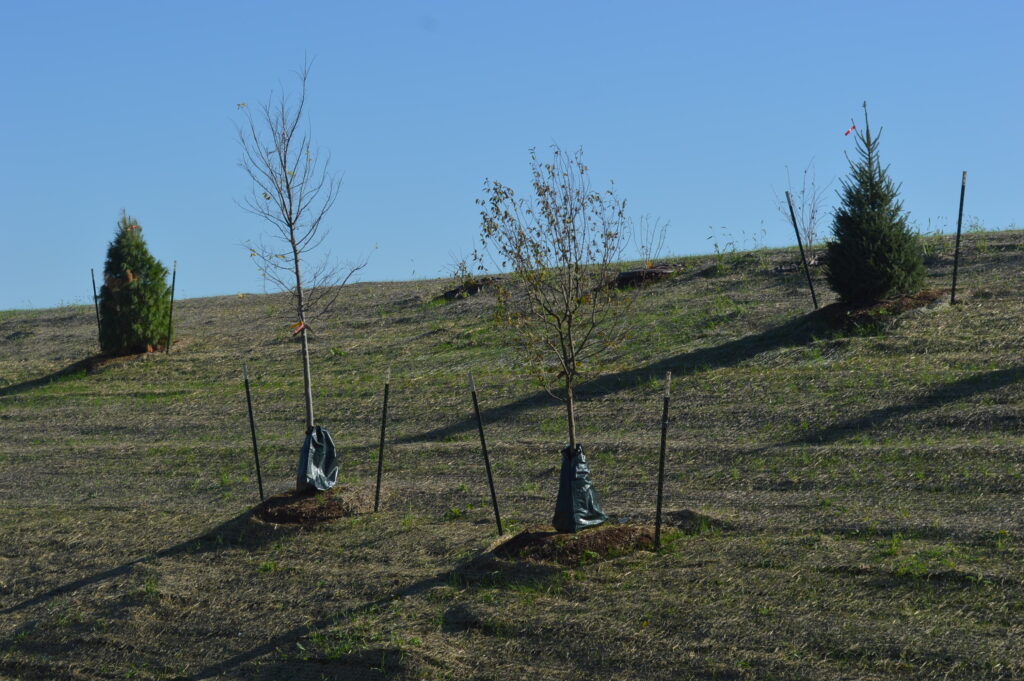
CEDAR RAPIDS, Iowa — Cargill plans to demolish a home in the Rompot neighborhood near the industrial railyard the ag giant is constructing that displaced a prairie pollinator zone.
More: See “before” and “after” photos of the Prairie Pollinator Zone
According to City Assessor records, Cargill bought the 1,000-square-foot, single-family home in August for $150,000 — well above its $125,700 assessed value.
“Cargill purchased the 2555 24th Ave. SE home with the intent to (demolish) it, due to the significant 2008 flood damage and its long-lasting effects on the home, and plant trees to add to the existing neighborhood tree canopy,” Dan Pulis, Cargill’s Cedar Rapids corn milling facility manager, said in an email. “Cargill is assessing properties that do come up for sale near the corn milling facility to determine if they appeal to a specific business objective.”
“In this case, we see this property as an opportunity to further enhance the visual appeal of the neighborhood,” Pulis added. “The home was in need of some updates and structural repairs, and we chose the better option of razing it and planting trees.”
The homeowners lived in the house after it was repaired following the 2008 flood and again after the 2020 derecho windstorm.

Some neighbors question Cargill’s explanation of neighborhood beautification; worrying that the Rompot neighborhood, where the home is located, will gradually disintegrate, as did “The Flats” neighborhood, also in southeast Cedar Rapids, where Cargill bought out properties over time until no homes were left standing.
Just over 35 years ago, more than 120 homes were located in The Flats, named for the low-lying topography next to the Cedar River, with some of the houses dating to pre-Civil War times when the area was still outside the city limits.
Related: Last of The Flats; Bohemian home awaits rescue
Many Czech immigrants, who worked at the nearby Sinclair meat processing plant, settled in The Flats. Early residents of the Rompot neighborhood also had Czech roots, with families living in the same homes over generations.
“We have repeatedly stated our concern that we do not want this neighborhood to be a repeat of the Flats,” Barbara Stary, who lives in the area, wrote in a letter to the Cedar Rapids City Manager, Mayor and City Council. “We have had concerns about further intrusion by Cargill into the neighborhood.”
Stary noted that Cargill has stated they were not going to offer buyouts in the neighborhood, but would consider buying a property in the neighborhood if it came up for sale.
“We had not seen any ‘for sale’ signs at the property or any indication that the house was up for sale,” Stary wrote. “Yet, the owners, vocal supporters of the rail yard, who wholeheartedly welcomed the rail yard in their backyard as a welcome improvement to a prairie pollinator zone, sold their house to Cargill well over the assessed value.”
“With the shortage of housing following the derecho, it is inconceivable that Cargill will be tearing down a house,” she added.

Homeowner Patrick Shannon was one of few to speak in favor of the railyard in November 2019, before the City Council approved amending its future land use map and rezoning the land from suburban residential large lot to general industrial to allow Cargill to build its railyard on the 28-acre prairie at Stewart Road and Otis Avenue SE.
Shannon and his wife had been meeting with Cargill officials, he told the City Council at that meeting.
“They’ve been open with all the answers,” he said.
His wife, Patty Shannon, rejected the notion that the purchase of their home was a type of compensation for their support of Cargill.
“Both my husband and I are in our late 60s. We had just had enough,” she said, adding that Cargill told her their property would become part of a butterfly preserve project.
Like others in the Rompot neighborhood, their house had 10 feet of water inside after the 2008 flood. This spring, she said, she began to notice mold growth in the house.
“Enough was enough,” Patty Shannon said. “So I took a chance and called (Cargill) asking if they would be interested in the house. They were, so I took advantage and sold to them.”
She said she found an appraiser to determine fair market value, which Cargill was willing to pay, and the couple recently moved to a condo in southwest Cedar Rapids.

At its Oct. 21 meeting, the city’s Historic Preservation Commission reviewed the demolition permit for the home, built in 1965.
Steven Carnick, who owns a house next to the Shannon’s on 24th Avenue, said Cargill had not approached him to purchase his home, “but I’ve got his number if I do want to sell.”
Another resident, who would not give his name, said he plans to eventually sell to Cargill. He said Cargill offered to buy his home for future expansion, though Cargill officials have said they don’t intend to expand the railyard.
“They’re not looking to buy, but if you’re willing to sell, they’ll make you an offer,” he said.
Carnick echoed his comments.
“I guess they’re willing to give top dollar if you’re willing to sell,” he said.
See photos of the Prairie Pollinator Zone from last summer.


My father built the house in 1964. My husband a n d I bought the house in 1998. Before then we owned a home on Thompson Street.
I grew up in Rompot, my kids grew up there. At one time 5 generations of my family lived there.
P Shannon
And your point is?
This article is about preserving a neighborhood. Clearly the point of their reply is that big business is taking over areas where generations of families have lived, including their own. Maybe you’re not old enough or mature enough to understand what it’s like to have lived and grown up on property that has been in your family for that many decades.
I grew up on the farm my grandparents bought after they were married. It is same house where my dad was raised. My parents continued to reside in it until their death. It is still in my family and there have probably been $300k to 400k worth of improvements done to the house and land just in my lifetime. If someone else in my family bought it and squandered it away or it sold in an estate, tax sale, and it was demolished, I would be heartbroken beyond consolation.
Watching land and homes that have been in your family’s life for decades being erased??? That’s devastating to watch. I understand the sentimentality of the Shannon’s’ statement to which you replied, “and your point is?”
Either you are a troll or have no compassion for anything. This reply isn’t really towards you anyway. It’s just a note to the Shannons saying I am sorry for your crappy response.
[…] More: Neighbors worry Rompot will meet same fate as The Flats […]
[…] Related: Neighbors worry Rompot will meet same fate as The Flats […]
[…] Related: Neighbors worry Rompot will meet same fate as The Flats […]